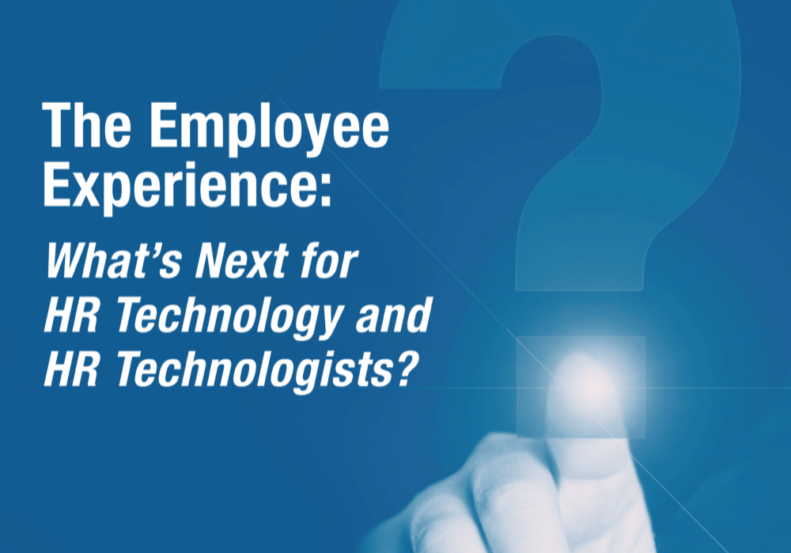It would not be overstatement to say that the COVID pandemic and its impact on the U.S. workforce has put HR professionals on a “roller coaster” over the past 21 months – and not the fun kind! In late spring of 2021, just as COVID vaccines were becoming plentiful and the trio of horrifying metrics (infection rate, hospitalization rate, and death rate) began to fall to hopeful levels, a new viral mutation, the delta variant, put us all back on a dramatic “ascend” of that coaster. Even now that delta may finally be under control, most epidemiologists believe we may not be “out of the woods” yet.
Those scientists are virtually of one voice in identifying COVID vaccine uptake as the path to returning to pre-pandemic conditions, including pre-pandemic safe working conditions. However, a stubborn core of between 20 and 45 percent of individuals across the country have refused the vaccine – in some states, this number is even higher. (See Fig. 1.) The nation’s top health care professionals have consistently maintained1 that unless and until we achieve “herd immunity” with vaccination rates across the U.S. of 70 to 85 percent, this pandemic will not end.
Fig. 1.

Perhaps it is for these reasons that surveyed employers have changed their views so radically on the issue of whether they will mandate COVID vaccines for their employees. In a survey conducted starting in January, 2021 and for several months thereafter by employment law firm Fisher Phillips, only 9 percent of employers had already mandated, or were considering mandating vaccines for their workforces. The results of this same survey taken at several points since then are revealing, since they parallel the ebb and flow of the pandemic, vis-à-vis both infection rates, on the one hand, and vaccination rates, on the other:
- May, 2021: 4 percent
- August, 2021: 15 percent
- October, 2021: 30 percent (See Fig. 2.)
Fig. 2

A similar survey2 by HR consulting firm Willis Towers Watson, conducted in late August, 2021, found an even more dramatic shift in attitude: fully 52 percent of surveyed employers stated that they would have some form of vaccine mandate in place by the fourth quarter of 2021, up from 21 percent who responded that they had those mandates currently in place. The plans to expand vaccine mandates reported in this survey ranged from 21 percent of employers planning or considering vaccination as a condition of employment, to 29 percent of employers planning or considering requiring vaccinations to gain access to the workplace.
Executive Branch Action
For the first eight months of 2021, the federal government took an “encourage but don’t mandate” approach to COVID vaccine administration generally, despite detailed reminders by the EEOC3 since December of 2020 that employers were within their rights, legally, to mandate vaccines among their employee populations.
The Occupational Safety and Health Administration (OSHA) issued its first major Emergency Temporary Standard (“ETS”) addressing COVID in the workplace on June 17, 2021, and it became effective four days later. The full detail of the ETS, specific to healthcare institutions, can be found at 29 CFR 1910, Subpart U4. This ETS greatly expanded the scope of healthcare employers to which it was applicable, including three major subgroupings: (a.) critical care hospitals and clinical settings, (b.) long-term care and nursing facilities, and (c.) home health care workers. OSHA published a handy flowchart5 which not only aided employers in identifying whether they were covered by the ETS, but also what steps they can take to satisfy various safety rule requirements. At several points in the flowchart, employers can, optionally, choose the quick route to removing themselves from all or a portion of the ETS purview by achieving 100% vaccination of their workforce (among other requirements), yet still this ETS stopped short of mandating vaccines for all employees of impacted employers. Finally, healthcare employers covered by this ETS can find a helpful YouTube video6 presentation by OSHA addressing its requirements.
The President’s September 9 “Path Out of the Pandemic” Orders
President Biden stepped to the podium on September 9 to announce his new “Path Out of the Pandemic”7 initiative, which completely “changed the game” for employers and vaccine mandates. The plan would mandate vaccines (with some exceptions) for almost 100 million American workers, in three separate categories:
- Federal workers: the scope of the new regulations includes most employees in the executive branch only (not legislative or judicial branches), but that includes the entire US military, for a total of about 4 million employees. This employee group’s regulations, which includes mandated vaccines, were promulgated under Executive Order 140438. Full guidance for this group9 was issued by the Safer Federal Workforce task force on September 16, requiring last dose vaccines-in-arms by November 8.
- Direct federal contractors and subcontractors: the scope of this new regulation includes most, but not all, federal prime contractors and their subcontractors. The rules are promulgated under Executive Order 1404210. Notably excluded from scope are contractors engaged exclusively in the manufacture of products for the U.S. government (no services provided), as well as those covered by the “simplified acquisition threshold”11 – generally where the total contract value is less than $250,000. Once again, vaccines are mandated (with no testing alternative), even for employees who work entirely from home offices, or in states that have laws/gubernatorial orders purporting to prohibit vaccine mandates. Full guidance for this group12 was also issued by the Safer Federal Workforce task force, on September 24, requiring last dose vaccines-in-arms by November 24.
- Private sector employers of 100 employees or more: Perhaps the most controversial vaccine mandate, as well as the farthest-reaching one (to ~ 100 million employees, of which ~ 17 million employees were already covered by the healthcare ETS referenced above), will require vaccines, or alternative weekly COVID testing, for all private sector employers with 100 or more employees. The new rules are also expected to require that employers give their employees paid time off to obtain the vaccine, as well as to recover from any adverse effects they feel from it. There are dozens of unanswered questions around the roll-out of this mandate (effective dates, testing methods, testing cost borne by whom?), and the pending new OSHA ETS is expected to address those questions. A final draft of the new ETS was submitted by OSHA to the White House and OMB on October 12, but as this article goes to press, there is no indication as to when the proposed final rule will be published in the Federal Register, and after that, will become effective.
Will These New Vaccine Mandates “Stick?”
Should employers ignore these mandates on the supposition that they will not survive legal challenges? Most employment law experts believe that these vaccine mandates will survive those challenges. The new rules that have been communicated so far are extremely deferential to existing employee protections. For example, all mandates so far have included exemption rules, on an employee-specific basis, for recognized ADA and EEOC protections, like medical conditions or sincerely-held religious belief. Note that a previous “carve-out” honored by many employers – an employee’s objection based on the “experimental” (or more accurately, “emergency use authorization”) status of all available vaccines – expired on August 23, 2021, when the FDA gave full and final approval to the Pfizer-BioNTech vaccine. The fact that the expected ETS applicable to private sector employers also includes a weekly testing “opt-out” alternative will likely weigh in favor of the legality of that order.
Legal challenges to employer vaccine mandates, thus far, have not fared well. The Network for Public Health Law13 tracks these cases, and for the 65 cases they found over the six-month period ending October 26, 2021, they found:
- 18 cases are still pending resolution,
- 12 cases were dismissed by the court as non-justiciable, or withdrawn by the plaintiffs
- 30 cases resulted in courts refusing to impose the requested injunction (i.e., upholding the mandates)
- 1 case in which the court struck down a vaccine “passport” ban (i.e., upholding the state’s ability to issue vaccine “passports”)
- 4 cases resulted in some degree of injunctive relief (i.e., “siding” with those objecting to the mandates); however, notably all 4 involved religious freedom arguments.
Finally, it should be noted that, although the Supreme Court has yet to rule specifically on employer-imposed vaccine mandates, or the executive branch’s ability to require them, two justices – usually seen as representing opposite ends of the bench, philosophically – Justices Sotomayor14 and Barrett15 – have both upheld vaccine mandates (albeit, in educational settings.)
The Human Capital Management Implications of Vaccine Mandates
It is highly unlikely that most vendors of HCM software and services were anticipating the depth and reach of President Biden’s Path Out of the Pandemic announcement and the requirements that would grow from it. Indeed, these new executive orders form the first mandate for employers in the U.S. to maintain records around employee immunizations of any kind. This leaves customers of these HCM systems scrambling, not only with the specific policies they will adopt, but also with the procedures, processes and systems support they will need to implement those new policies.
As employers await final regulations, there are a number of HCM features that it is clear will be needed to support them:
- ESS and employee portal enhancements (“Employee Health Central”): As we enter our 22nd month of this pandemic, innovative employers have already dedicated a portion of their employee self-service home page to the COVID pandemic and the employer’s response to it. For those employers that have not yet done so, new vaccine mandates represent a communications challenge that may simply require it. A new “Your Health Central” set of tiles in a dedicated area of the employee portal can be leveraged for all kinds of important information around an employer’s response to the pandemic.
- Vaccine administration records: The modifications needed to actually capture the vaccination records may actually be one of the easier fixes to make, in most flexible HRMSs today. Many privacy experts agree that when it comes to retaining these records, “less is more” – a multi-entry self-service page with date, vaccine number (1st, 2nd, or 3rd) and perhaps the brand (Pfizer, Moderna or J&J) is really all that is needed.
- “Slice-and-dice” reporting on vaccine records: Most HCM and HR professionals now recognize that collected data is only as valuable as the standardized and ad hoc reporting available to leverage that data. When interpreting compliance levels with expected future ETS rules, HR staff needs to be able to detect trends and patterns like vaccinations by organization level, or change in vaccination levels over time. (See Fig. 3).
Fig. 3


- Enhanced PTO tracking: Based on key passages from President Biden’s announcement, the new private sector employer ETS is expected to include new employer mandates to provide to all employees paid time off to obtain the vaccination, as well as PTO for any reactions or side effects that prevent an employee from immediately returning to work. Employers will likely want to track these new PTO entitlements separately, to ensure that these privileges are not abused by employees. For example, a “side-effect” keeping an employee out of work, and occurring six weeks after the vaccine was administered, while theoretically possible, would certainly merit follow-up investigation by the employer.
- Document attachments: Most employment law experts are simply assuming, at this point, that having the employee upload an image of their CDC-issued vaccination card, with review by an appropriate HR staff member, will be necessary to comply with the new ETS. For some employers who perhaps had attachment capabilities in their HRMS but never used the feature, this may become the compelling event to do so. Of course, like all document attachment capabilities, the process should be able to be secured to a small group of users with a business need to access them, and should be subject to workflow approvals (acceptance by HR) before becoming part of the “official” employee record.
- Weekly testing reminders: For those employers choosing to offer testing opt-out alternatives, an automated reminder system (e-mail, text alert, etc.) will take one potentially major additional burden off of HR’s shoulders.
- Learning management system capabilities: For better or worse, every employer is in the unenviable position right now of trying to ascertain the extent to which their employee population is being influenced by the misinformation and disinformation campaigns in social media around many aspects of the pandemic – not least of which surrounds vaccinations. Indeed, the CDC maintains and publishes pages of “myth vs. fact” information16 about COVID vaccines. Leading edge employers, anxious to accelerate their workforces’ “return-to-normal” as soon as possible, are making this information available to their employees in the learning management systems they already maintain for other purposes.
- COVID-related content for the LMS: When it comes to COVID and vaccination information distribution, as important as the decision to deploy the LMS is, the choice of pre-fabricated content is just as important. Choosing “politically neutral,” scientifically sound, and continuously updated content is key to having a positive impact on an employee base.
- COVID symptom checkers and entrance scanners: For employers of a certain profile (requiring all or most employees to return to a communal workspace, freely allowing employee opt-out of the vaccination process by taking weekly COVID tests, or perhaps smaller employers under 100 employees), daily detection of infected employees and keeping them from the workplace while they are infected, is going to be mission-critical to overcoming this pandemic. For this reason, interactive symptom checkers, temperature scanners, and similar technology will remain crucial to the success of any COVID-fighting plan.
- Employee pulse surveys: In the era of the “Great Resignation,”17 many employers see these vaccine mandates coming at a particularly inopportune time. While the extent of employees leaving jobs18 solely to avoid vaccine mandates is yet unknown19, one sure way for employers to engage an “early warning system” of this phenomenon is by deploying an old, dependable technology: the engagement survey. Re-checking social media buzz and branding (such as what’s being said about an employer’s vaccine policies on linkedin, glassdoor, Facebook and the like) are good ideas as well.
At press time for this article, there was more that was unknown about the details of the private sector (100 or more employees) vaccine mandate, than was actually known. Key details will be announced when OSHA publishes their ETS in the Federal Register, and in FAQs and training videos which will no doubt follow. For now, it’s fair to say that, administratively, these new mandates represent the biggest new HR challenge since the impact of the ACA compliance rollout in 2013-2015, and employers will need to stay informed and agile to address them.
End Notes
1https://health.clevelandclinic.org/how-much-of-the-population-will-need-to-be-vaccinated-until-the-pandemic-is-over/
2https://www.willistowerswatson.com/en-US/News/2021/09/workplace-vaccine-mandates-expected-to-accelerate-wtw-survey-finds
3https://www.eeoc.gov/wysk/what-you-should-know-about-covid-19-and-ada-rehabilitation-act-and-other-eeo-laws
4https://www.osha.gov/sites/default/files/publications/OSHA4122.pdf
5https://www.osha.gov/sites/default/files/publications/OSHA4125.pdf
6https://www.youtube.com/watch?v=YIB1TZS3pBE
7https://www.whitehouse.gov/covidplan/
8https://www.whitehouse.gov/briefing-room/presidential-actions/2021/09/09/executive-order-on-requiring-coronavirus-disease-2019-vaccination-for-federal-employees/
9https://www.saferfederalworkforce.gov/faq/vaccinations/
10https://www.whitehouse.gov/briefing-room/presidential-actions/2021/09/09/executive-order-on-ensuring-adequate-covid-safety-protocols-for-federal-contractors/
11https://www.acquisition.gov/far/part-2#FAR_2_101
12https://www.saferfederalworkforce.gov/contractors/
13https://www.networkforphl.org/wp-content/uploads/2021/10/Western-Region-Memo-COVID-Vaccine-Mandate-Cases-1.pdf
14https://www.reuters.com/world/us/us-supreme-courts-sotomayor-lets-new-york-school-vaccine-mandate-remain-2021-10-01/
15https://www.scotusblog.com/2021/08/barrett-leaves-indiana-universitys-vaccine-mandate-in-place/
16https://www.cdc.gov/coronavirus/2019-ncov/vaccines/facts.html
17https://hbr.org/2021/09/who-is-driving-the-great-resignation
18https://www.npr.org/2021/09/29/1041500566/vaccine-mandate-quit-research
19https://hrexecutive.com/is-your-talent-really-walking-out-the-door-to-avoid-a-covid-vaccine/



